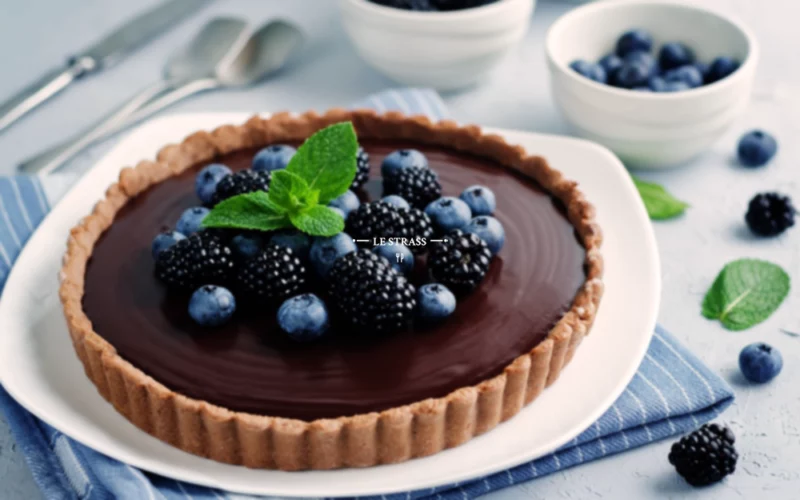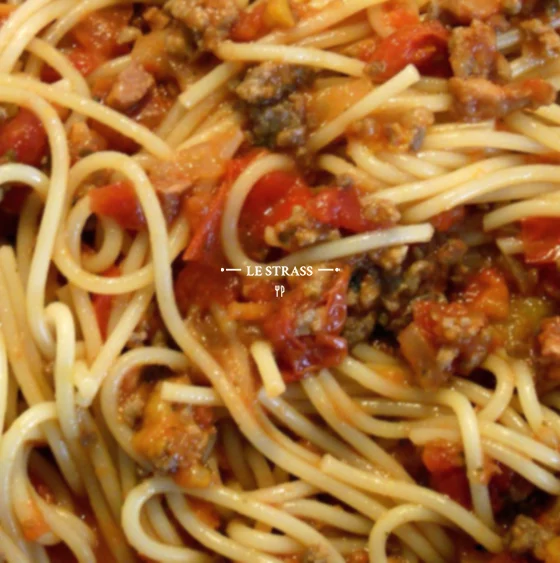Dessert 101: From Sweet Treat to Cultural Icon
Let’s talk dessert, shall we? That glorious, often sweet finale to a meal that can make or break your dining experience. But what exactly *is* a dessert? And why are we so obsessed with them? Let’s dive into the sugary world of desserts and uncover everything you need to know, from spelling it right to its fascinating history.
Dessert Defined (and Spelled Correctly!)
First things first, let’s nail down the definition. According to Merriam-Webster, a dessert is « a usually sweet course or dish (as of pastry or ice cream) usually served at the end of a meal. » Simple enough, right? But here’s where things get tricky for some: spelling.
It’s « dessert » with two « s »s, not « desert » with one. « Desert » with one « s » is that hot, sandy place where you definitely wouldn’t want to be caught without water. « Dessert » with two « s »s is what you *want* to be caught with after dinner, preferably with a spoon.
Think of it this way: dessert has two « s »s because you always want a *second* helping of « sweet stuff. » Or maybe because it’s twice as good as just one « s ». Whatever helps you remember!
Pronunciation Pitfalls: Dessert vs. Desert
Spelling isn’t the only hurdle. Pronunciation can also trip you up. « Desert » (the dry place) is pronounced « DEZ-ert, » with the stress on the first syllable. « Dessert » (the sweet treat) is pronounced « di-ZURT, » with the emphasis on the second syllable. Got it? Good. Now you can confidently order your « di-ZURT » even in the middle of the « DEZ-ert » (if you find a restaurant there, that is).
« Just Deserts » – A Phrase, Not a Pudding
And finally, a quick word on « just deserts. » This phrase, often used when talking about punishment or reward, is spelled « deserts » but has nothing to do with sweet treats. It’s an older usage of the word « desert, » meaning « that which one deserves. » So, when someone gets their « just deserts, » it’s about what they *deserve*, not a sugary confection. Unless, of course, they deserve a really good piece of cake – then maybe it’s both!
A Sweet History: Tracing Dessert’s Roots
Ever wondered where our love affair with dessert began? The word itself comes from the French word « desservir, » meaning « to clear the table. » Dessert was literally what came *after* everything else was cleared away. The French, always ahead of the curve in culinary matters, gave us the very term.
Ancient Sweet Tooth: Rome and Beyond
But the *habit* of eating sweets after meals goes way back, even to Ancient Rome. Those Romans, known for their lavish feasts, definitely had a sweet tooth. They borrowed dessert ideas from the Greeks and Egyptians and created their own Roman-style desserts. Imagine those toga-clad gourmands indulging in sweet treats!
The Oldest Dessert on Earth? Ashure from Turkey
For the title of « world’s oldest dessert, » many point to Ashure, a dish from Anatolia (modern-day Turkey). This isn’t just old; it’s *ancient*, with deep spiritual roots and a history stretching back millennia. So, if you want to taste history, try some Ashure.
Custard’s Medieval Reign and Beyond
If Ashure is ancient, custard is merely medieval! Custard is considered one of the first desserts ever enjoyed in the Middle Ages. And from there, the dessert scene blossomed. Apple pies appeared around 1381, gingerbread followed in the 1400s, and the sweet evolution continued.
Desserts in the Old World: Cakes, Custards, and Fritters Galore
In the Old World, especially England, desserts were a delightful mix of cakes, custards, and fritters. Think funnel cake and other fried goodies. Basically, if it was sweet and slightly indulgent, it was dessert material.
France: The Birthplace of Dessert Tradition
While sweet treats existed long before, the *tradition* of consistently ending a meal with something sweet truly took hold in France. So, we can thank the French for formalizing our dessert obsession. *Merci*, France!
Dessert Around the World: Cultural Twists
Dessert isn’t a universal, cookie-cutter concept. Cultures around the globe have their own unique takes on the sweet finale. Let’s take a quick trip around the world, dessert plate in hand.
French Dessert Etiquette: Cheese First, Then Sweetness
In France, dessert is definitely *after* the main course, but often, there’s a cheese course *before* dessert. Why cheese before dessert? It acts as a transition, a savory interlude before diving into the sweet stuff. And in French dining, dessert is a proper ending, a way to savor the meal’s final flavors. Oh, and « dessert » in French? It’s spelled exactly the same: « dessert. » *Très facile!*
Leaving Food in France: Surprisingly Polite
Here’s a quirky French dining custom: leaving a little food on your plate is generally considered polite, especially if you’re full. It shows you enjoyed the meal and aren’t overeating. So, don’t feel obliged to clean your plate, especially if dessert is on its way!
Germany (and Parts of Europe): Dessert First?
Now, for a dessert curveball: in Germany and some other parts of Europe, eating dessert *first* isn’t unheard of. Imagine starting your meal with a fruit tart or pastry! It’s a different approach, and who are we to judge starting with the best part?
British Dessert Lingo: Pudding, Sweet, Afters
Across the English Channel, in Britain, you might hear different terms for dessert. « Pudding » is common, especially for the sweet course after the main meal. You might also hear « sweet » or « afters, » depending on where in Britain you are. So, if someone offers you « pudding, » don’t expect savory – they’re talking dessert!
Native American Desserts: Saututhig Simplicity
Even Native Americans had their own desserts. Saututhig, a blueberry baked dessert, was a simple pudding made with blueberries, cracked corn, and water. Simple, natural, and delicious.
Egyptian Sweet Endings: Honey and Dates
Ancient Egyptians also had their dessert game strong. Their festival dessert menus included raisin bread, sweet bread, honey cakes, and sweetmeats. No sugar back then, so they used dates and honey for sweetness – naturally delicious!
Dessert and the Meal: A Sweet Relationship
Dessert is almost always the final course. It’s the sweet punctuation mark at the end of a meal, the last culinary hurrah before you roll away from the table (happily, of course).
Why Cheese Before Dessert? The French Rationale
We touched on this earlier, but why *do* the French often have cheese before dessert? It’s all about palate progression. Cheese provides a savory bridge between the main course and the sweetness of dessert. It’s a sophisticated way to transition flavors.
Dessert vs. Pudding: What’s the Difference?
Is there a real difference between dessert and pudding? Generally, « dessert » is a broader term. Puddings are a type of dessert, often cooked, but desserts can be lighter, more sophisticated, and sometimes uncooked. Think of it like squares and rectangles – all puddings are desserts, but not all desserts are puddings.
When to Eat Dessert: Anytime is a Good Time (Almost)
When *should* you eat dessert? Traditionally, after dinner. But hey, some people advocate for « dessert first. » The logic? If you eat dessert first, you might curb your appetite for the main course. Plus, as the famous quote goes, « Life is uncertain, eat dessert first and worry later. » Solid advice, if you ask me!
Spotlight on Specific Desserts: Sweet Stars
Let’s shine a light on a few specific desserts with interesting stories.
Nestle Original Dessert: A Brand, Not a Dish
If you’re wondering « What is Nestle original dessert? », it’s not a *specific* dessert recipe but rather a product line by Nestle. So, it’s more of a dessert *brand* than a particular dessert itself.
Linzer Torte: The Oldest Cake in the World?
For cake history buffs, Linzer Torte takes the crown as the world’s oldest known cake. Named after the Austrian city of Linz, it’s a classic for a reason.
Indian Pudding: America’s Oldest Dessert
Across the pond, Indian Pudding claims the title of America’s oldest dessert. A taste of early American culinary history in a bowl.
Chocolate Biscuit Cake: Queen Elizabeth’s Favorite
Royal dessert alert! Chocolate Biscuit Cake was reportedly Queen Elizabeth II’s favorite dessert. If it’s good enough for the Queen, it’s definitely worth a try.
The Dessert Family: Cakes, Pies, Cookies, and More
Desserts come in countless forms: cakes, pies, cookies, ice cream, pastries, puddings, candies… the list goes on! Western cultures have embraced a huge variety of sweet endings.
Pancakes: Dessert in Disguise?
And finally, pancakes. Are they dessert? It depends! Often a breakfast staple, pancakes can absolutely cross over to dessert territory, especially when loaded with sweet toppings. So, yes, pancakes can be dessert – if you want them to be!
Dessert Miscellany: Fun Facts and Related Concepts
Let’s wrap up with some dessert-related trivia.
Dessert Chefs: Patissiers of Sweetness
What do you call a dessert expert? A pastry chef, or if you want to sound fancy, a « patissier. » These are the culinary artists who craft those delightful sweet creations.
The « Second Stomach » Myth: Dessert Edition
Ever feel like you have a « second stomach » just for dessert? You’re not imagining it! There’s a phenomenon where we seem to find room for dessert even when we’re full. It’s not a literal second stomach, but the desire for dessert is real!
Famous Dessert Quotes: Words to Live By
And of course, dessert inspires great quotes. Remember « Life is uncertain, eat dessert first »? There are many more where that came from, celebrating our sweet indulgence.
Meat in Dessert? Believe It or Not!
Meat in dessert? Sounds weird, right? But in Turkish cuisine, believe it or not, there are desserts containing meat! Chicken breast pudding, quince dessert with minced meat, and even anchovy dessert exist. Intriguing, if not exactly mainstream.
So, there you have it – a whirlwind tour of the wonderful world of dessert. From its definition and history to cultural quirks and fascinating facts, dessert is more than just a sweet treat; it’s a cultural phenomenon, a culinary art form, and a delightful end to any meal. Now, if you’ll excuse me, I think I deserve a little « di-ZURT. »





